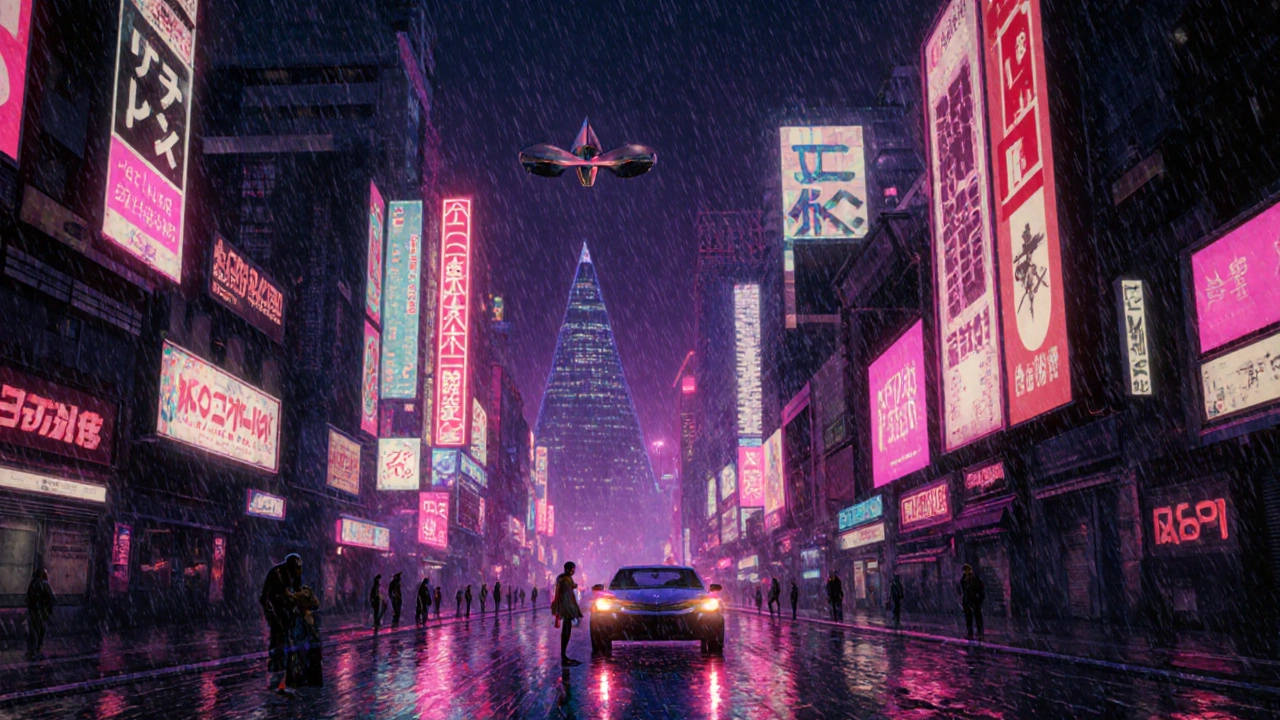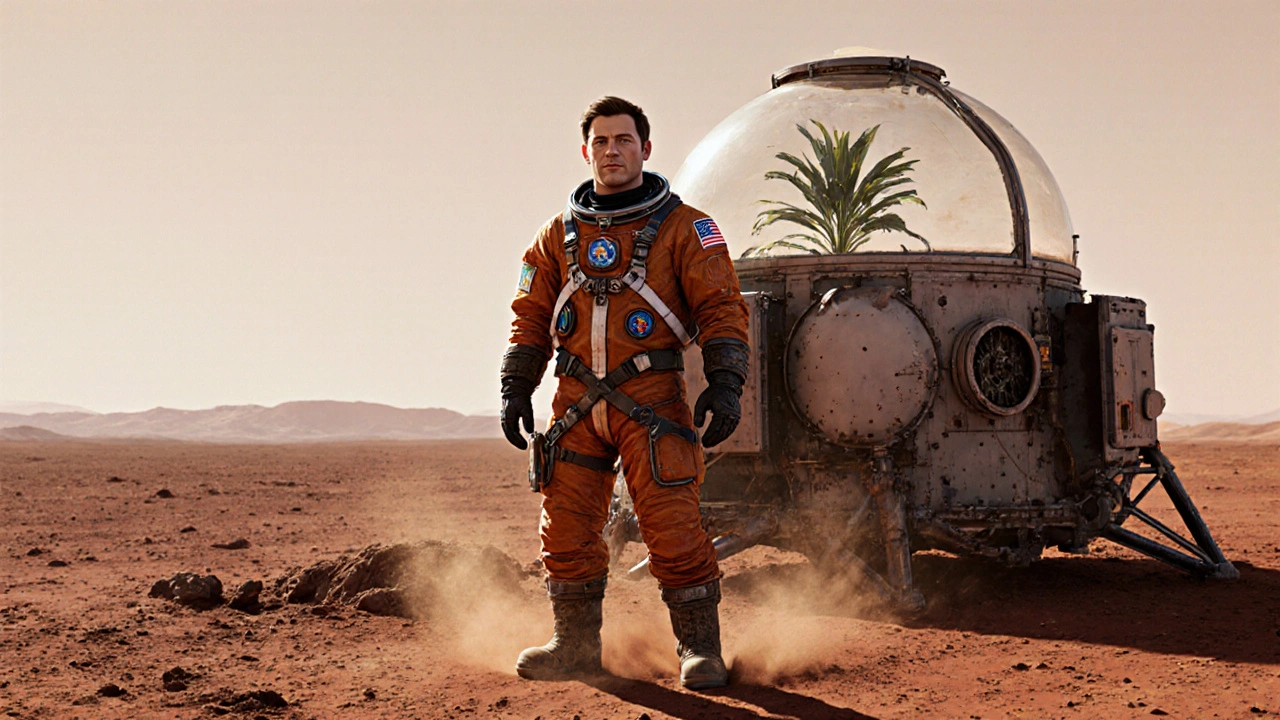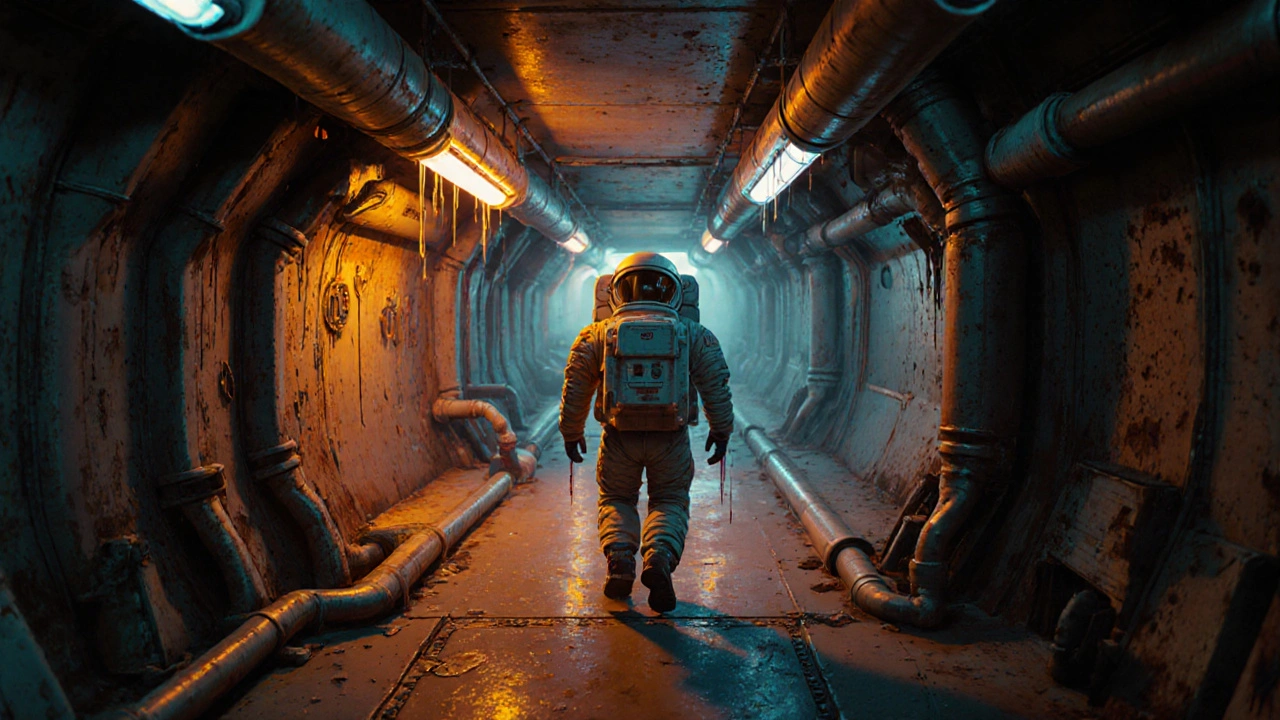The Worlds He Built Aren’t Just Sets - They’re Characters
When you watch Ridley Scott’s films, you don’t just see a story. You step into a living, breathing world. The air feels thick in the corridors of the Nostromo. The neon glow of Los Angeles in 2019 sticks to your skin. The dust of Mars clings to every surface in The Martian. These aren’t backdrops. They’re emotional anchors. Scott doesn’t design environments to look cool - he designs them to feel real, to weigh on the characters, to tell the story before a single line of dialogue is spoken.
From Commercial Roots to Cinematic Vision
Scott didn’t start out directing epics. He cut his teeth in TV commercials, where every second counted and every frame had to sell. That’s where he learned to speak visually - how to use light, texture, and space to make people feel something in under 30 seconds. When he made his first feature, The Duellists, at 39, he already knew how to make a shot matter. That discipline carried through every film after. He didn’t wait for big budgets to make bold choices. He made the most of what he had, and when he got the money, he used it to build worlds that no one else could imagine.
Alien: The Birth of a New Visual Language
Alien (1979) didn’t just scare people - it rewrote the rules of sci-fi design. Before Scott, space was clean, shiny, and sterile. He made it dirty. Greasy. Industrial. The Nostromo wasn’t a spaceship; it was a working factory in orbit, with dripping pipes, flickering fluorescents, and metal that looked like it had been touched by a thousand hands. H.R. Giger’s biomechanical alien wasn’t just a monster - it was a nightmare made physical, born from the same world that birthed the ship. The design earned an Oscar, but more than that, it became the blueprint for every gritty, lived-in future that came after. You can see its DNA in Dead Space, Event Horizon, even Stranger Things.
Blade Runner: The City That Breathes
If Alien was about claustrophobia, Blade Runner (1982) was about suffocation on a city scale. Scott didn’t use CGI to build 2019 Los Angeles. He built 60,000 square feet of physical sets. He added 30,000 practical lights. He made it rain - constantly - because he knew moisture would reflect neon and make the world feel tangible. The city wasn’t just a setting; it was a character. The towering pyramids of corporate power, the flickering holograms, the crowds packed into alleyways - every detail screamed decay, inequality, and forgotten humanity. It cost $1.3 million just to build the skyline. Today, that same vision is used in video games, fashion, and architecture. Blade Runner didn’t predict the future - it defined how we now see it.

Gladiator: Building Rome From Scratch
For Gladiator (2000), Scott didn’t film in Rome. He rebuilt it - in Malta. A 12-acre set, made with 1.5 million pounds of marble dust, took five months to construct. He didn’t just want to recreate the Colosseum; he wanted to make you feel the heat, the sweat, the roar of 50,000 people. He used 16,000 extras for the arena scenes. He didn’t fake the crowd’s energy - he captured real noise, real movement. The result? A battle sequence that still feels visceral 25 years later. The film won Best Picture, but its real triumph was proving that audiences would believe in a world built with brick, dust, and blood - not pixels.
The Martian: Science as a Character
Scott’s approach to science fiction changed again with The Martian (2015). No longer was he building dystopias - he was building a future grounded in real science. NASA consultants helped design the Mars habitat. The set in Jordan wasn’t painted; it was built on actual Martian-like terrain. He used 65mm film cameras for 80% of the shoot, capturing 8K resolution with 14 stops of dynamic range. The result? A film where every tool, every patch on the suit, every grain of red dust felt authentic. Audiences gave it an 8.1/10 on IMDb. Critics praised the science. But what really stuck was the feeling - you believed Mark Watney was alone there, because the world around him was too real to fake.
Production Mastery: How He Works
Scott’s process is brutal, but it works. He spends 6 to 9 months on pre-production - longer than most directors spend on the entire shoot. His production designer, Arthur Max, has worked with him since 1997. Together, they create 3,000 to 5,000 concept drawings per film. Scott shoots at 22-24 frames per second, uses 24-40mm lenses, and insists on 3:1 lighting ratios - high contrast, deep shadows. He doesn’t wait for perfect weather. He makes the light work for him. He uses practical effects wherever possible. In Napoleon (2023), he used 15,000 pounds of black powder for explosions. In Black Hawk Down, he fired 12,000 bullet hits with real gunfire. He doesn’t trust CGI to carry emotion. He trusts what’s in front of the camera.

Why His Style Still Matters
Today, most blockbusters are built in computers. But Scott’s films still dominate discussions about visual storytelling. Why? Because his worlds feel lived-in. You can smell them. You can feel the grit under your nails. A 2022 CinemaBlend survey found that 78% of viewers believe his practical sets create more emotional authenticity than all-CGI environments. Film students at UCLA named him the top visual inspiration in 2023. Video game studios cite Blade Runner as a primary reference. Even his critics admit it: his visuals are unmatched. Roger Ebert called Blade Runner “a visual landmark.” Martin Scorsese said, “World-building isn’t decoration - it’s storytelling.” Scott didn’t just make movies. He gave cinema a new way to feel.
The Legacy Isn’t Just in the Films - It’s in the Industry
Scott’s influence isn’t just in what he made - it’s in how he changed filmmaking. He pioneered digital dailies, allowing instant feedback on set and cutting reshoots by 37%. His collaboration with cinematographer Dariusz Wolski created a consistent visual language across seven films. His company, Scott Free Productions, manages $200 million in annual production budgets. He’s directing at 86, with Gladiator II and Alien: Romulus on the horizon. He’s not slowing down. He’s not chasing trends. He’s still building worlds - bigger, richer, more detailed than ever. The industry follows him because he doesn’t just make films. He makes worlds that outlive the movies.
Why is Ridley Scott’s production design so influential?
Scott’s design work stands out because he treats every environment as a character, not a backdrop. He uses practical sets, real textures, and physical lighting to create worlds that feel tangible and lived-in. His attention to detail - from the rust on a spaceship wall to the way rain reflects neon - makes his films immersive in a way CGI-heavy productions often can’t match. This approach has become the gold standard for sci-fi and historical epics.
What makes Blade Runner’s visual style unique?
Blade Runner’s style blends neo-noir shadows with cyberpunk density. Scott built 60,000 square feet of physical sets, added 30,000 practical lights, and made it rain constantly to create a wet, glowing, oppressive city. The mix of Eastern architecture, towering corporate towers, and crowded streets created a future that felt real, not futuristic. It wasn’t about sleek tech - it was about decay, inequality, and human clutter. That look became the blueprint for decades of sci-fi design.
Does Ridley Scott still use practical effects today?
Yes. Even in 2023’s Napoleon, he used 15,000 pounds of black powder for explosions, 8,000 extras, and 450 horses. He prefers real environments, real weather, and real motion. He’ll use CGI only when absolutely necessary - like enhancing a battle or removing modern buildings. His belief is simple: audiences feel emotion more deeply when what’s on screen is physically real.
How does Scott’s approach differ from modern directors?
Most modern directors rely on green screens and digital environments built in post-production. Scott builds sets first, then shoots on them. He spends months on pre-production design, often working with the same team for decades. He shoots on film, uses natural lighting where possible, and insists on practical effects. His process is slower and more expensive, but it creates a level of texture and realism that digital methods often lack.
What films best showcase Ridley Scott’s design mastery?
The top three are Alien (1979) for its biomechanical horror design, Blade Runner (1982) for its dystopian cityscape, and Gladiator (2000) for its monumental historical reconstruction. The Martian (2015) shows his evolution into scientifically accurate world-building, while Napoleon (2023) proves he’s still pushing boundaries with 12K cameras and massive practical sets.
What’s Next? The Future Is Still Being Built
At 86, Ridley Scott isn’t looking back. He’s building. Gladiator II is in production with a $150 million budget and eight months of design work already done. Alien: Romulus is coming, with him as producer, guiding the next chapter of the universe he started. He’s already planning The Last Duel 2, focused on historically accurate medieval armor and siege warfare. He’s not chasing nostalgia. He’s chasing truth - in texture, in scale, in the weight of a world that feels like it could have existed. And as long as he’s behind the camera, the next great cinematic world isn’t just coming - it’s already being built.

